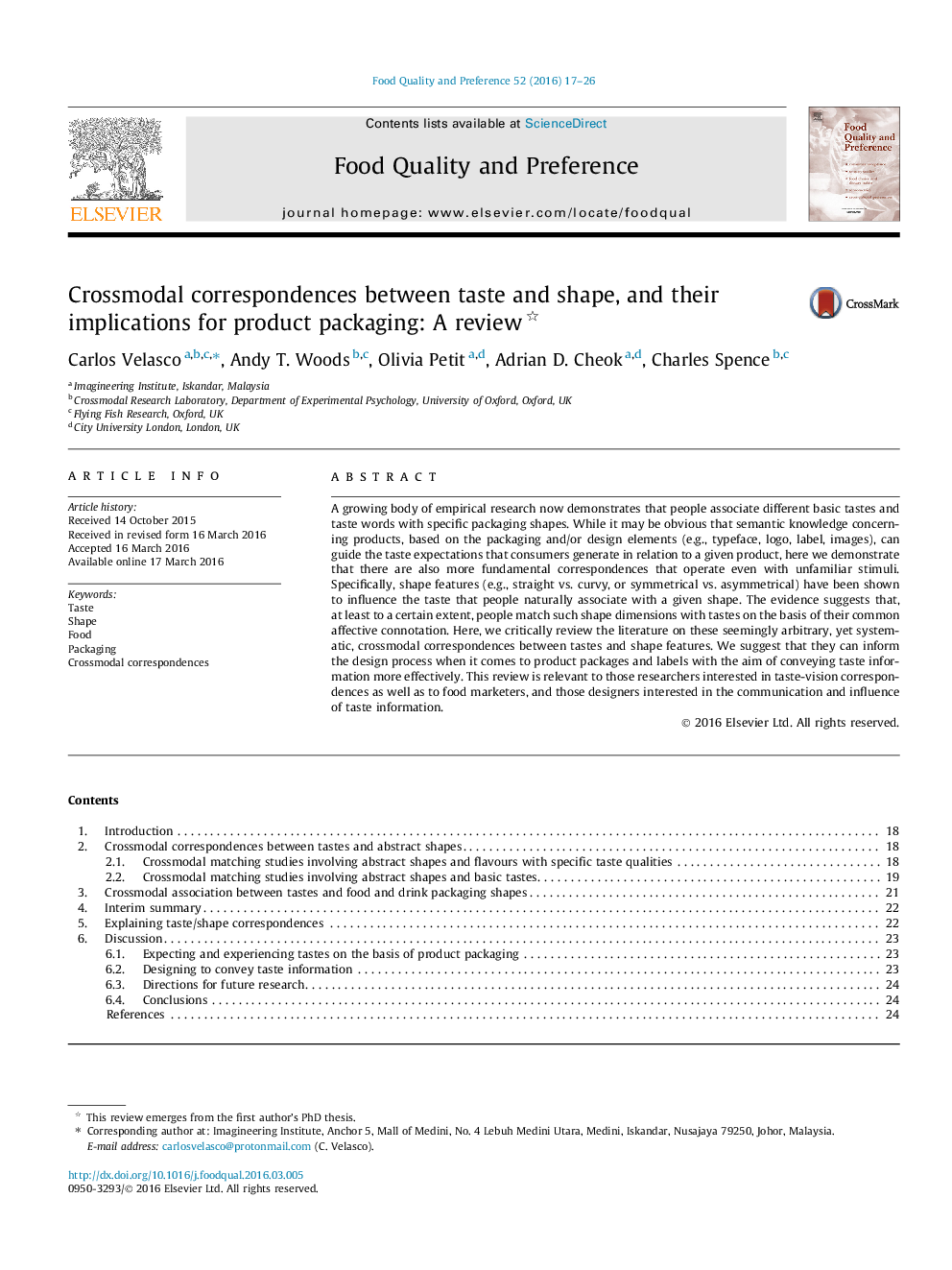| کد مقاله | کد نشریه | سال انتشار | مقاله انگلیسی | نسخه تمام متن |
|---|---|---|---|---|
| 6261015 | 1613147 | 2016 | 10 صفحه PDF | دانلود رایگان |
- The literature of taste-shape crossmodal correspondences is reviewed.
- People associate non-packaging and packaging shape features with specific tastes.
- A shared affective space of tastes and shapes may explain these associations.
- Taste estimates are also influenced by consumers' semantic knowledge about products.
- Crossmodal correspondences can incorporate taste experience into packaging design.
A growing body of empirical research now demonstrates that people associate different basic tastes and taste words with specific packaging shapes. While it may be obvious that semantic knowledge concerning products, based on the packaging and/or design elements (e.g., typeface, logo, label, images), can guide the taste expectations that consumers generate in relation to a given product, here we demonstrate that there are also more fundamental correspondences that operate even with unfamiliar stimuli. Specifically, shape features (e.g., straight vs. curvy, or symmetrical vs. asymmetrical) have been shown to influence the taste that people naturally associate with a given shape. The evidence suggests that, at least to a certain extent, people match such shape dimensions with tastes on the basis of their common affective connotation. Here, we critically review the literature on these seemingly arbitrary, yet systematic, crossmodal correspondences between tastes and shape features. We suggest that they can inform the design process when it comes to product packages and labels with the aim of conveying taste information more effectively. This review is relevant to those researchers interested in taste-vision correspondences as well as to food marketers, and those designers interested in the communication and influence of taste information.
Journal: Food Quality and Preference - Volume 52, September 2016, Pages 17-26
